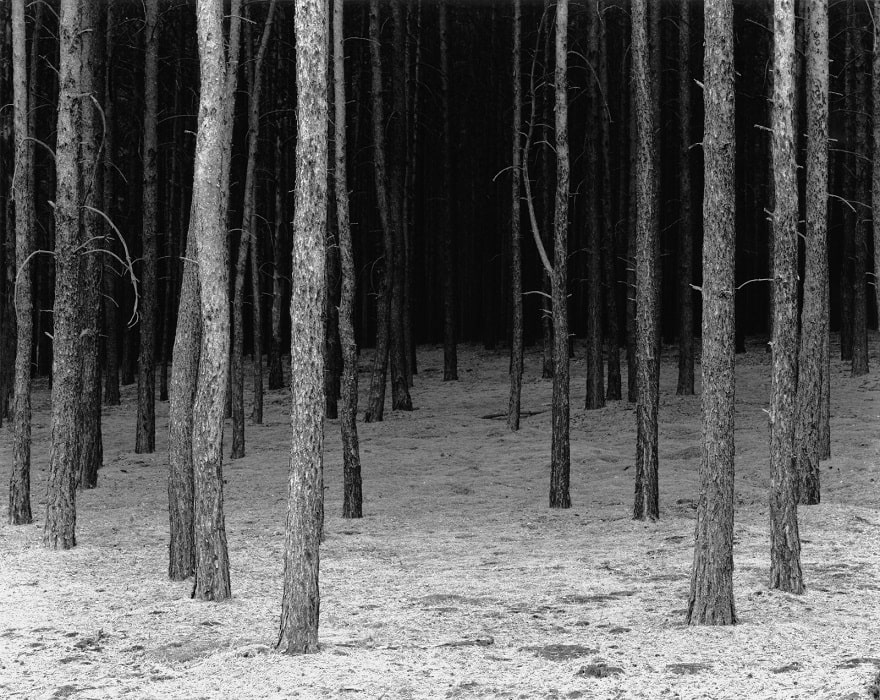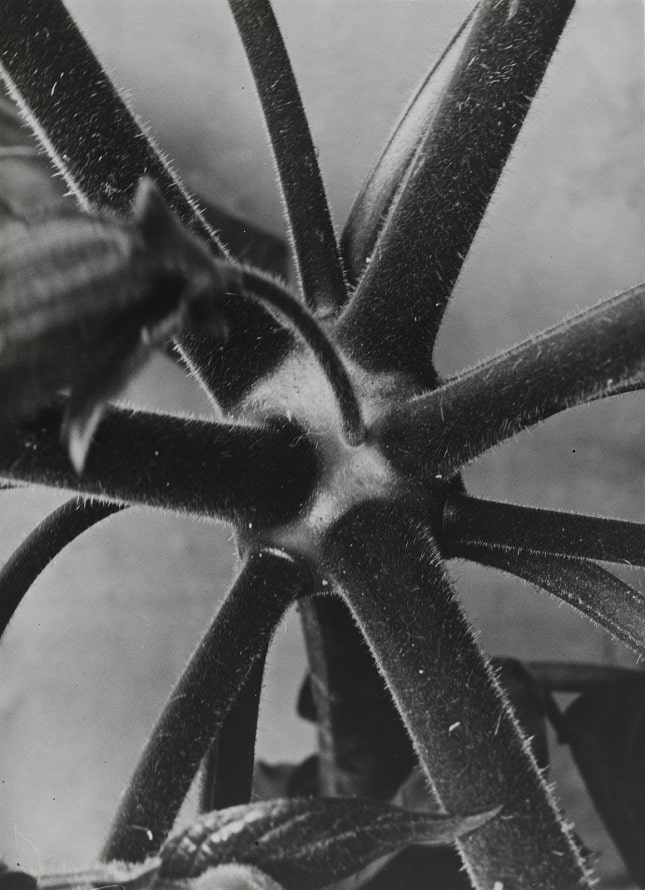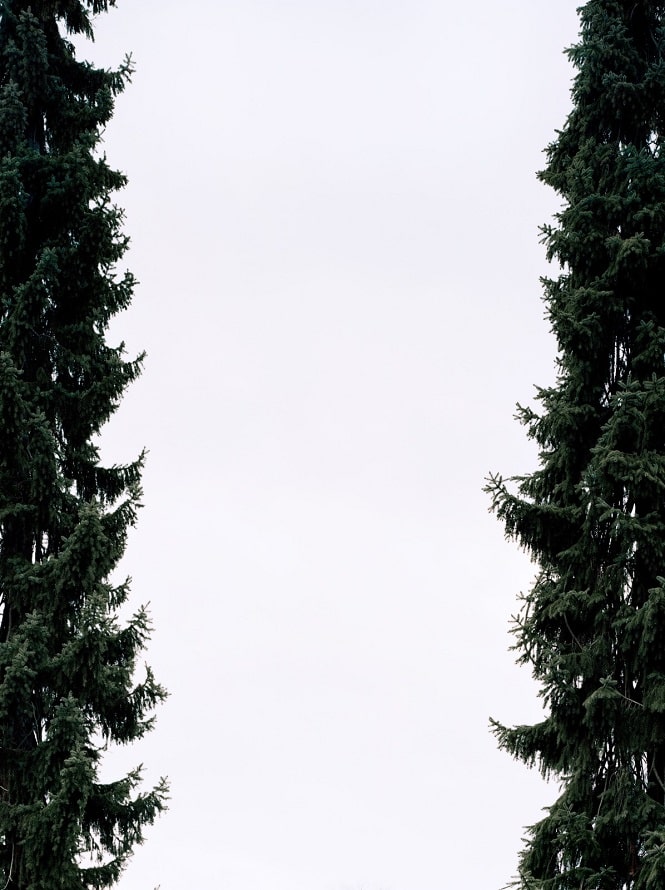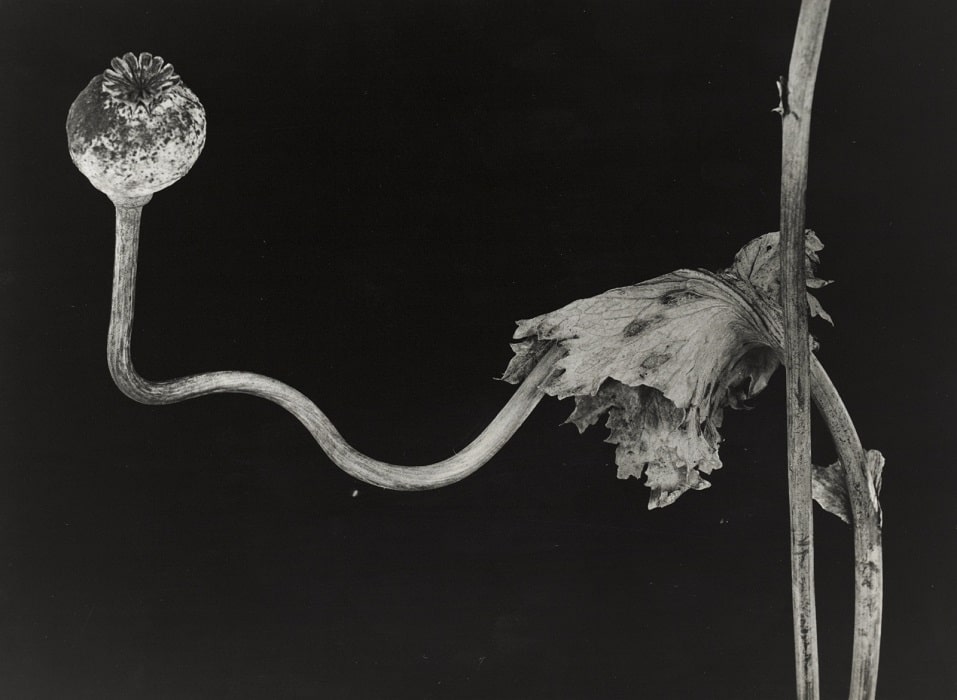Tall firs, dense mangroves, bizarre flower pistils – the plant world produces unique forms. Integrated into complex and highly sensitive ecosystems, plants are intertwined with human culture in many ways. Their contemplation can be calming, thought-provoking or trigger strong feelings of trepidation and fear. In photography, plants have been popular objects of photographic processes and experiments since the beginning of the 19th century. The exhibition “Grünzeug. Plants in Contemporary Photography”, on view at the Berlinische Galerie from 12 October 2023, takes up this multifaceted theme. It presents contemporary works mainly from the Photographic Collection that negotiate the often ambivalent relationship between people and plants in the medium of photography.
Fig. above: Folkwang-Auriga Verlag, Unknown photographer, Papaveraceae. Papaver somniferum, garden poppy, seed capsule, around 1930, © legal succession unknown, Repro: Anja Elisabeth Witte.
Six artistic positions
Falk Haberkorn (1974, Berlin) plays with the contradictions between romanticized veneration and the forest threatened by environmental influences and economic interests. He describes his working method as a “visual questioning” of the “supposedly vivid”. The enigmatic nature of the image “Schonung” triggers emotions and also evokes memories of fairy tales and legends of Western cultures.

Mimi Cherono Ng’ok (1983, Nairobi, Kenya), includes personal feelings in her cut-out plant paintings printed on rice paper. With a strong awareness of the mutability of our environment, she also travels through tropical climates. She photographs in the Domincan Republic, on the edges of urban settlements, and in gardens and parks of São Paolo or Nairobi.
Susanne Kriemann (1972, Erlangen) has a fine sense for the fragility of our globalized living environments. For the series “Mngrv polymersday” (2020), she photographed in the Indonesian mangroves on Pulau Bintan – where, as a result of the pollution of the world’s oceans, civilizational waste becomes entangled in the fragile ecosystem. The artist depicts the involuntary association of synthetic waste, such as fishing nets or plastic bags, and plant life as a unity.
Andrzej Steinbach (1983, Czarnkow, Poland) developed the twenty-part series “Ashtray and Yoga Mat” (2023) at the invitation of the Berlinische Galerie. From 132 historical photographs of plants, fungi and minerals from the picture archive of the Folkwang-Auriga publishing house (1928-1932), he selected those that he found interesting from a pictorial point of view. Corresponding with this selection, the artist created photographs of consumer goods and everyday objects. Nature and culture are no longer opposites, but interconnected. In this way, he invites us to consider the man-made and the naturally grown as an interplay.

“Sculpture, object or plant being?” asks Stefanie Seufert (1969, Göttingen), reducing the evergreen conifer to its form alone with the means of photography. The tree photographed in front gardens and parks becomes the subject of her series “01-1 – 1-10” (2006-10), which aims at ambiguity and comparison. Can the series also be read in terms of documentary typologies and does the individual image point beyond itself? Stefanie Seufert examines the characteristics of photography and starts where images elude genre classification.

Ingar Krauss (1965, East Berlin) photographs in the Black Forest, Brandenburg and Norway. In his seemingly harmonious image compositions, he searches for the contradictions between human over-shaping of the forest and uncontrollable nature. Stacked logs, branches leaning against trees, scattered deadwood and heaped brushwood are the results of both profit-oriented and sustainable forestry. These diverse orders of man characterise the forests in Europe.
The exhibition encourages visitors to include personal feelings when observing the plant world, to sensitise their own ecological awareness and to perceive nature and culture as a unity.
WHERE?
Berlinische Galerie, State Museum of Modern Art, Photography and Architecture
Alte Jakobstraße 124-128
10969 Berlin
WHEN?
Mon, Wed, Fri, Sat, Sun 10 am – 6 pm
Thu 10 am – 8 pm
Tue closed
COST?
Admission 15 €, reduced 9 €






